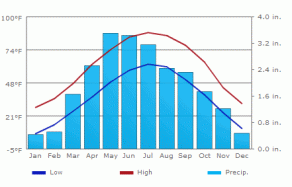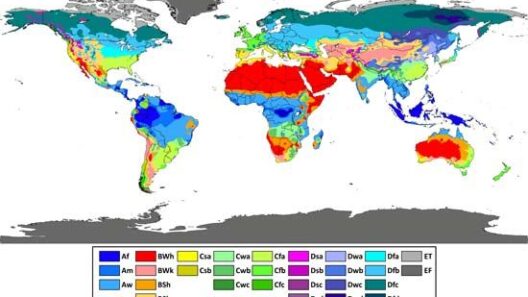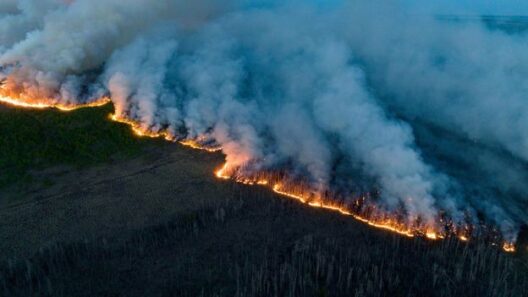South Dakota offers a unique climatological tapestry, characterized by its vast prairies and expansive skies. The climate of South Dakota is predominantly continental, marked by considerable temperature fluctuations, both seasonally and daily. Understanding its complexities will illuminate the various ways in which this environment shapes the ecosystems, agriculture, and lifestyle of its inhabitants.
The state experiences all four seasons distinctly, each presenting its own character. Spring brings a transition from the frigid grip of winter to the rejuvenation of life. As the thaw occurs, daytime temperatures slowly escalate, allowing the flora to awaken. However, this season can be capricious; snow showers are not uncommon in March and early April. Such variability poses challenges for agriculture, as farmers must navigate unpredictable planting windows.
Summer settles over South Dakota with intensity. With long days adorned by abundant sunshine, temperatures can soar well into the 90s°F (30s°C). The warm, humid air creates an inviting condition for rapid plant growth but also sets the stage for severe thunderstorms. Often, these storms unleash torrential rain, hail, and even tornadic activity. The contrast between serene summer evenings and the sudden ferocity of storms serves as a reminder of nature’s unpredictability and power.
As the warm season transitions into fall, the transformation is palpable. Often regarded as one of the most picturesque times of the year, autumn showcases a vibrant palette of changing leaves. Temperatures gradually decline, often detaching the warmth of summer from the brisk air. This season is crucial for farmers, as the harvest commences. The cooling climate indicates a time to gather crops, preparing for the impending winter months.
Winter cloaks South Dakota in a silvery shroud, often beginning in late November and lingering until March. The frigid temperatures can plummet well below freezing, with the northern regions experiencing harsher conditions. Snowfall can be abundant, creating ideal conditions for winter sports, yet these conditions also pose challenges for transportation and day-to-day life. Wind chill can exacerbate the cold, making it feel even more severe. Understanding these extremes is vital for both residents and visitors, ensuring preparedness for potential harsh weather.
Another essential aspect of South Dakota’s climate is its precipitation patterns. While the state averages about 20 to 30 inches of rain per year, this distribution is not uniform. The eastern regions generally obtain more moisture, whereas the western parts tend to have a semi-arid climate, with lower rainfall. This variation dramatically influences local ecosystems. For example, the wetter eastern prairies support lush grasslands and diverse wildlife, while the drier west transitions into a more desolate landscape where flora has adapted to tougher conditions.
Climate change is an issue that cannot be overlooked, as it poses significant implications for South Dakota’s climate. The increasing global temperatures contribute to higher occurrences of extreme weather events, altering traditional patterns. Drought conditions have become more prevalent in certain areas, concerning agricultural productivity and water resources. Moreover, farmers must now adapt their practices to account for shifting rainfall patterns and increasingly erratic temperatures. The challenges presented by climate change necessitate proactive measures to safeguard ecosystems and food systems.
In light of these challenges, understanding climate resilience becomes crucial. Local initiatives aiming for sustainable agricultural practices offer pathways for combating climate impacts. Techniques such as cover cropping and rotational grazing not only enhance soil health but also improve the land’s ability to retain moisture, thereby mitigating the effects of both droughts and intense rainfall. Collaborative efforts among farmers, scientists, and policymakers will be integral in fostering a climate-smart approach to agriculture, ensuring the longevity of South Dakota’s agricultural viability.
Furthermore, the state boasts unique ecosystems that require protection. From the sprawling Badlands to the rich biodiversity within the Black Hills, South Dakota’s landscapes are home to numerous plant and animal species, many of which are sensitive to changes in climate. Conservation efforts to protect these habitats are paramount as they serve as necessary buffers against the greenhouse gas emissions contributing to climate change. Both local and federal programs aimed at preserving natural resources will be vital for the long-term sustainability of these ecosystems.
The cultural significance of weather in South Dakota cannot be understated either. Residents have a unique connection to the land, entwined with the rhythms of nature. The indigenous communities have long understood the importance of harmony with the environment. Their teachings can impart valuable wisdom, advocating for respect and stewardship of the land. This cultural heritage continues to inspire contemporary discussions on environmental responsibility and sustainability practices.
In conclusion, the climate of South Dakota is a reflection of its geographic diversity and natural beauty. With its dramatic seasonal shifts, regions of varied precipitation, and the pressing realities of climate change, the state embodies both fragility and resilience. In recognizing the essential components of its climate, there lies a responsibility for all who live in and love this land to advocate for sustainable practices and the protection of its delicate ecosystems. As conversations on climate evolve, the people of South Dakota stand to play a vital role in shaping their environmental future amidst the ever-changing landscape of prairie weather and big skies.








